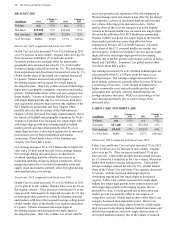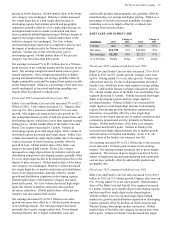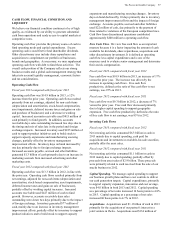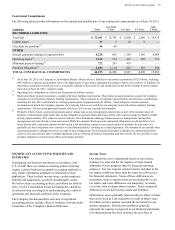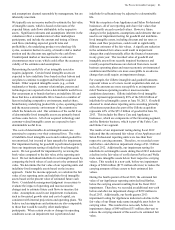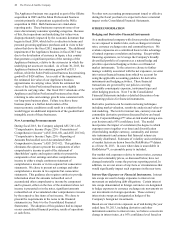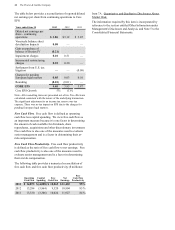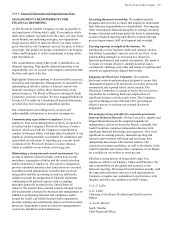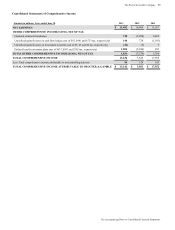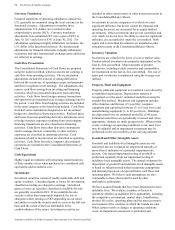Proctor and Gamble 2013 Annual Report Download - page 46
Download and view the complete annual report
Please find page 46 of the 2013 Proctor and Gamble annual report below. You can navigate through the pages in the report by either clicking on the pages listed below, or by using the keyword search tool below to find specific information within the annual report.
44 The Procter & Gamble Company
The table below provides a reconciliation of reported diluted
net earnings per share from continuing operations to Core
EPS:
Years ended June 30 2013 2012 2011
Diluted net earnings per
share - continuing
operations $ 3.86 $ 3.12 $ 3.85
Venezuela balance sheet
devaluation Impacts 0.08 ——
Gain on purchase of
balance of Iberian JV (0.21)
Impairment charges 0.10 0.51 —
Incremental restructuring
charges 0.18 0.20 —
Settlement from U.S. tax
litigation —— (0.08)
Charges for pending
European legal matters 0.05 0.03 0.10
Rounding (0.01) (0.01) —
CORE EPS 4.05 3.85 3.87
Core EPS Growth 5% (1)%
Note - All reconciling items are presented net of tax. Tax effects are
calculated consistent with the nature of the underlying transaction.
The significant adjustment to an income tax reserve was tax
expense. There was no tax impact on EPS due to the charges for
pending European legal matters.
Free Cash Flow. Free cash flow is defined as operating
cash flow less capital spending. We view free cash flow as
an important measure because it is one factor in determining
the amount of cash available for dividends, share
repurchases, acquisitions and other discretionary investment.
Free cash flow is also one of the measures used to evaluate
senior management and is a factor in determining their at-
risk compensation.
Free Cash Flow Productivity. Free cash flow productivity
is defined as the ratio of free cash flow to net earnings. Free
cash flow productivity is also one of the measures used to
evaluate senior management and is a factor in determining
their at-risk compensation.
The following table provides a numerical reconciliation of
free cash flow and free cash flow productivity ($ millions):
Operating
Cash Flow
Capital
Spending
Free
Cash Flow
Net
Earnings
Free
Cash Flow
Productivity
2013 $ 14,873 $ (4,008) $ 10,865 $ 11,402 95%
2012 13,284 (3,964) 9,320 10,904 85 %
2011 13,330 (3,306) 10,024 11,927 84 %
Item 7A. Quantitative and Qualitative Disclosures About
Market Risk.
The information required by this item is incorporated by
reference to the section entitled Other Information under
Management's Disclosure and Analysis, and Note 5 to the
Consolidated Financial Statements.


